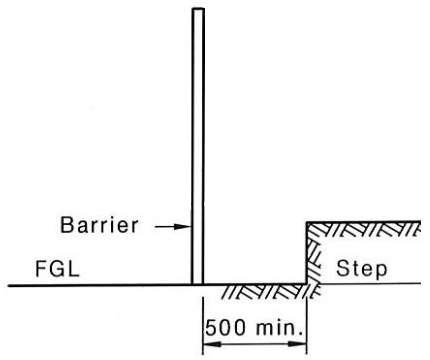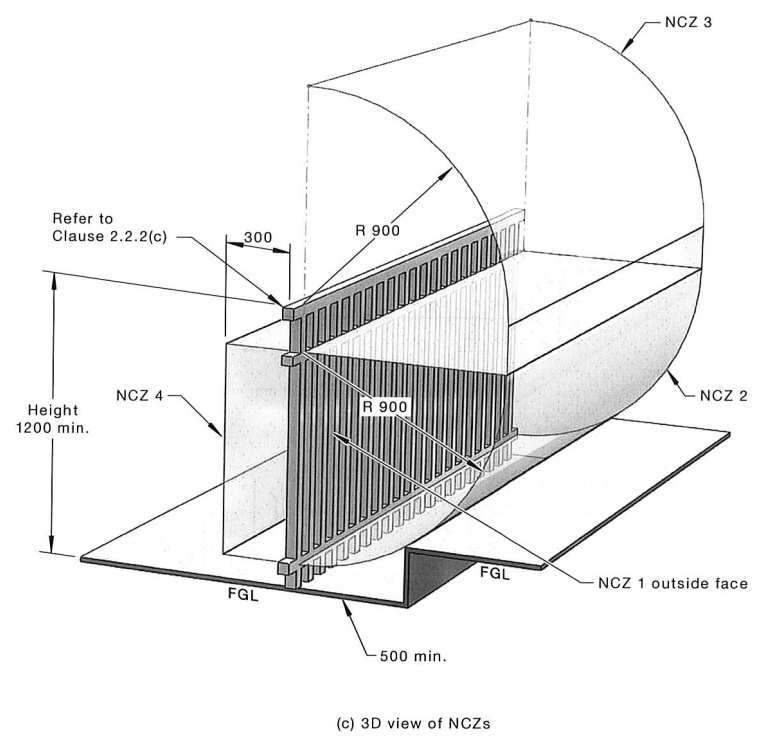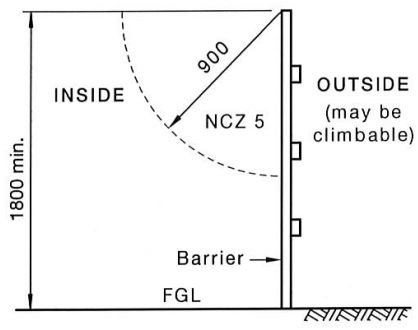Information
-
Site conducted
-
Document No.
-
Prepared by
-
Conducted on
-
Location
-
Document ID
-
Contact Phone Number
-
Client/Site
Audit - Swimming Pools Act and AS1926.1-2012
General Information
-
People present while audit being conducted
CPR signage:
-
Is the CPR Signage compliant?
-
The resuscitation sign must be:
-legible from a distance of at least three meters
-maintained in a clearly legible condition.
The following warning statements must be contained within the resuscitation sign:
-Young children should be supervised when using this swimming pool.
-Pool gates must be kept closed at all times.
-Keep articles, objects and structures at least 900 mm clear of the pool fence at all times. -
What are the issues with the CPR Signage
-
The resuscitation sign must be:
-legible from a distance of at least three meters
-maintained in a clearly legible condition.
The following warning statements must be contained within the resuscitation sign:
-Young children should be supervised when using this swimming pool.
-Pool gates must be kept closed at all times.
-Keep articles, objects and structures at least 900 mm clear of the pool fence at all times.
Spa Pool
-
Is the spa pool secured or covered by a child safe structure ( such as a door, lid, grille or mesh) that is fastened to the spa pool by a child resistant device?
Barrier - General
-
Are there windows opening into the pool area?
-
Are the windows fixings compliant?
-
If sill is less than 1800 from ground, window must be either:
covered by bars or metal screen. Openings in bars or screen must not be greater than 100mm and must require the use of a tool to remove
OR
Fixed so it cannot be opened any more than 100mm without the use of a tool -
If sill is less than 1800 from ground, window must be either:
covered by bars or metal screen. Openings in bars or screen must not be greater than 100mm and must require the use of a tool to remove
OR
Fixed so it cannot be opened any more than 100mm without the use of a tool -
Is the barrier a permanent structure?
-
The barrier must be a permanent structure, meaning it can not be removed without the use of tools and it is not a temporary fencing.
-
There are not features or objects that would reduce the height of the barrier to be located within 500mm of the barrier on the outer side of the fencing? (excluding boundary fencing)
-
No features or objects that would reduce the height of the barrier can be located within 500mm of the barrier. These items need to be removed in order to meet compliance or the fence can be raised in height to be 1200mm from the heighest point of the objects.
-
Features diagram
Pool Barrier Fencing - Measurements
-
Is finished ground level a permanent stable surface?
-
A finished ground level must be a permanent stable surface in order to accurately check the height of the barrier. The ground surrounding the barrier must be fixed to be a permanent stable surface.
-
Is the height of fence from top of fence to finished ground greater than 1200mm (for non-boundary fence)?
-
The finished height of the fence in relation to the finished ground must be greater than 1200mm for a non-boundary fence. The fence height must be fixed to meet the 1200mm requirement - this can be achieved by adding to the existing fence or replacing the fence. If adding to the fence be aware that additional horizontal bars may pose other compliance issues.
-
Is the width of all vertical gaps less than 100mm (including gate)?
-
The maximum allowed vertical gap is 100mm, any gaps greater than this must be fixed by either replacing the fencing section or adding additional material to reduce the gaps.
-
Is the gap between bottom of barrier and finished ground level no greater then 100mm (including gate)?
-
The gap can be no greater than 100mm, this gap must be reduced, this can be achieved by lowering the fence but please be aware that this would in turn lower the overall fence height which may pose other compliance issues.
Pool Barrier Fencing less than 1800mm - Non Climbable Zone's(NCZ)
-
3D NCZ DIAGRAM
-
NCZ 1 clear?
-
NCZ 1 is measured vertically on outside face of barrier.
No handholds or footholds, or objects or plants that will facilitate climbing in NCZ.
No projections or indentations with horizontal surface greater than 10mm. -
The NCZ 1 (refer to diagram) must be clear of handholds and footholds, or objects or plants that will facilitate climbing in NCZ.
No projections or indentations with horizontal surface greater than 10mm are acceptable. Remove the objects in the zone or render them non climbable by adding a 60 degree surface on the horizontal edge or other compliant measures. -
NCZ 2 clear?
-
NCZ 2 is a quadrant measured from the outside of the barrier created by 900mm radius down from the top of NCZ 1.
No handholds or footholds, or objects or plants that will facilitate climbing in NCZ.
Note: NCZ2 is always immediately adjacent to NCZ1 on all barriers -
NCZ 2 is a quadrant measured from the outside of the barrier created by 900mm radius down from the top of NCZ 1.
The NCZ 2 (refer to diagram) must be clear of handholds and footholds, or objects or plants that will facilitate climbing in NCZ.
Remove the objects in the zone or render them non climbable by adding a 60 degree surface on the horizontal edge or other compliant measures. -
NCZ 3 clear?
-
NCZ 3 is a quadrant on the outside of barrier created by a 900mm radius UP from the top of the barrier
No handholds or footholds, or objects or plants that will facilitate climbing
Note: If the top of NCZ 1 is below the top of the barrier, NCZ 3 extends vertically down to the top of NCZ 1.
Note: NCZ 3 does not apply to any item or component on, or that is part of, the barrier. NCZ 3 is applicable only to the space created by the quadrant. -
NCZ 3 is a quadrant on the outside of barrier created by a 900mm radius UP from the top of the barrier
The NCZ 3 (refer to diagram) must be clear of handholds and footholds, or objects or plants that will facilitate climbing in NCZ.
Remove the objects in the zone or render them non climbable by adding a 60 degree surface on the horizontal edge or other compliant measures.
Note: If the top of NCZ 1 is below the top of the barrier, NCZ 3 extends vertically down to the top of NCZ 1.
Note: NCZ 3 does not apply to any item or component on, or that is part of, the barrier. NCZ 3 is applicable only to the space created by the quadrant. -
NCZ 4 clear?
-
NCZ 4 is a 900mm high by 300mm deep rectangular space on the inside of the barrier, aligning with NCZ 1.
No handholds or footholds, or objects or plants that will facilitate climbing in the NCZ.
Note: Only applies where barrier has vertical openings 10mm - 100mm in width. -
NCZ 4 is a 900mm high by 300mm deep rectangular space on the inside of the barrier, aligning with NCZ 1.
The NCZ 4 (refer to diagram) must be clear of handholds and footholds, or objects or plants that will facilitate climbing in NCZ.
Remove the objects in the zone or render them non climbable by adding a 60 degree surface on the horizontal edge or other compliant measures.
Note: Only applies where barrier has vertical openings 10mm - 100mm in width.
Boundary Pool Barrier
-
NCZ5 diagram
-
Measures at least 1800mm, measured from inside the pool area?
-
A boundary barrier must measure no less than 1800mm at any point along the fence line. When the boundary barrier is less than 1800mm the option is to increase the barrier height with extensions to the fencing, alternately replacing the existing barrier with a taller 1800mm barrier.
-
NCZ 5 clear?
-
NCZ 5 is a quadrant of 900mm radius, measured down from the top of the inside of the boundary pool barrier
No handholds or footholds, or objects or plants that will facilitate climbing in NCZ. -
NCZ 5 is a quadrant of 900mm radius, measured down from the top of the inside of the boundary pool barrier
The NCZ 5 (refer to diagram) must be clear of handholds and footholds, or objects or plants that will facilitate climbing in NCZ.
Remove the objects in the zone or render them non climbable by adding a 60 degree surface on the horizontal edge or other compliant measures. -
Does the internal pool barrier intersect into NCZ 5?
-
At the point of intersection does the barrier meet one of the following criteria? <br>- be less than 50mm and intersect at angle between 45 and 13 degrees,<br>OR<br>- continue at greater than 1800mm for at least 900mm.
-
Where internal pool barrier intersects into NCZ5, the top of internal barrier must:
- be less than 50mm and intersect at angle between 45 and 13 degrees,
OR
- continue at greater than 1800mm for at least 900mm.
Any intersecting internal barrier not meeting the above criteria must be altered to meet the requirements.
Gates
-
Is the gate kept securely closed?
-
The gate must be in working order, check the lock/latch and hinges are adjusted correctly or replace if can not be sufficiently adjusted.
-
Does gate swing away from pool area?
-
The gate must swing away from the pool area, move the hinge and lock so that the gate will swing away from the pool area.
-
Are the hinges protruding out less than 10mm?
-
Are the top of each hinge further apart than 900mm?
-
In accordance with NCZ 1 requirements there can not be protrusions/footholds present. The Apply hinge caps to the lower hinge on your gate.
-
Does gate swing freely through its entire arc of operation? (i.e. cannot be wedged open)
-
The gate must swing freely through its entire arc of operation, remove any item impending the arc or adjust gate or hinges to allow free movement.
-
Full arc of operation clear of any building or doorway?
-
Confirm overall height greater than 1200mm (on outside of pool area)?
-
The overall height of the gate must be 1200mm (measured on the outside), the gate could be raised to meet this requirement however the maximum gap underneath the gate can not be more than 100mm. If this can not be achieve a new gate will need to be installed.
-
NCZs clear for the gate?
-
Maximum 100mm under closed gate?
-
The maximum height underneath the date is 100mm, the gate could be lowered to meet this requirement however the minimum height of the gate can not be less than 1200mm. If this can not be achieve a new gate will need to be installed.
-
Vertical spaces no more than 100mm?
-
The maximum gap between vertical spaces can not be more than 100mm. In order to correct these gaps perspex or a comparable product could be applied or the barrier section should be replaced with appropriate barrier materials.
-
Self-closing device closes the gate from any position, with a stationary start, without the application of a manual force and operates the latch?<br>1. From resting on latch<br>2. From approximately half-open<br>3. From fully open position<br>4. From any position after a 25kg weight has been placed on the top rail or component, 100mm from the outer edge of the locking stile of the gate for 30 seconds and then removed?
-
The gate must comply with these 4 conditions, in order to meet these conditions the hinges or latch could be adjusted, if adjustment is not sufficient they may need to be replaced.
-
Lift gate upwards and pull downwards with a force of 250N.<br>The above movement of the gate must not:<br>1. Release the latch<br>2. unhinge the gate<br>3. increase gap under gate to greater than 100mm
-
The gate must comply with these 3 conditions, in order to meet these conditions the hinges or latch could be adjusted, if adjustment is not sufficient they may need to be replaced.
-
Latch shall not be able to:<br>1. be inadvertently adjusted during operation<br>2. Locked in the 'open' position<br>3. adjusted without use of tools
-
The gate must comply with these 3 conditions, in order to meet these conditions the hinges or latch could be adjusted, if adjustment is not sufficient they may need to be replaced.
-
Release point for latch?<br>Either:<br>- No less than 1500mm from finished ground level,<br>OR<br>- On inside and protected by 450mm shield, so no gaps greater than10mm present.
-
The gate must comply with these conditions, in order to meet these conditions the hinges or latch could be adjusted, if adjustment is not sufficient they may need to be replaced.
Strength and Rigidity
-
Does the barrier meet the strength and rigidity requirements of opening?
-
Manual ‘squeeze’ test of vertical members using the PSI’s non-dominant (weaker) hand at the midsection of the vertical
members and at a randomly selected panel of the fence. Where the fence appears to be constructed from different types of
panels or from panels that have been added to the fence at different times, a PSI should check each different type of panel or panels that were added at different times. The squeezing action applied should be a moderate strength action equivalent to the pressure applied during a firm handshake and not a
vigorous or full strength squeezing action. The PSI should remember the required level of resistance to a deforming force
only needs to be sufficient to deter a young child pushing through the barrier. -
Sections of the barrier will need replacing as per the photos supplied for this area
-
Does the barrier meet the strength and rigidity requirements of posts and footings?
-
Apply 33 kilos of force to the post at 1200mm above ground level, after the application of the load inspect for looselessness or damage
-
To test the strength and rigidity of the posts and footings, 33 kilos of force to the post is applied at 1200mm above ground level, after the application of the load inspect for looselessness or damage. The test has shown that your posts and footings are not meeting requirements. The posts and footings that need replacing are seen as per the photos supplied for this area
-
Does the barrier meet the strength and rigidity requirements of barrier components?
-
Structural components such as panel infills, top and bottom rails, rods, palings, pickets and the like shall be capable of sustaining a force of 33 kilos without any component braking or showing signs of fatigue, loosening or the effectiveness of the panel is impaired or becoming permanently deformed.
-
To test the strength and rigidity of the Structural components such as panel infills, top and bottom rails, rods, palings, pickets and the like shall be capable of sustaining a force of 33 kilos without any component braking or showing signs of fatigue, loosening or the effectiveness of the panel is impaired or becoming permanently deformed. The test has shown that your barrier components are not meeting requirements. The barrier components that need replacing are seen as per the photos supplied for this area
Overview
-
I have taken photographs of any non-compliance in the relevant sections.
-
Take photographs showing the entire barrier here.
-
Additional Comments
-
There is no significant risk to public safety?
-
If Certifier considers that the safety of a person is at risk if the requirements of a direction were not carried out as soon as possible, it may serve the direction without notice. See section 23(6) of the Act.
-
What is the nature of the risk?
-
What is the outcome of the Swimming Pool Inspection?
-
Re-Inspection must be completed prior to this date or the situation will be referred to the local council
-
Notification of Non Compliance
The Swimming Pool was inspected and found non-compliant under Swimming Pools Act 1992. This notice is being issued under section. 22E Swimming Pools Act 1992 indicating the items of non-compliance.
For details of non-compliance please review the remainder of the report. These are the areas identified at the time of the inspection. -
Owner's Details
-
Real Estate Details









